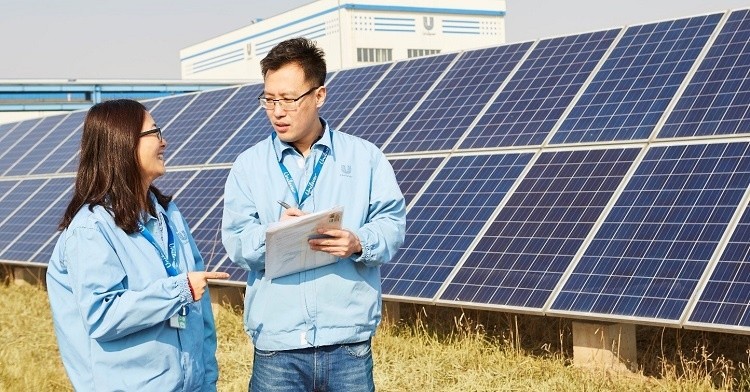Renewable energy presents tremendous opportunities and financial benefits
Vietnam has a competitive advantage in developing the renewable energy sector due to its long coastline, strong winds, and abundant sunshine. The national strategy of Vietnam aims to leverage this advantage by demonstrating a strong commitment to achieving net zero emissions by 2050 through initiatives to diversify energy sources such as hydropower, wind power, solar power, biomass energy, and green hydrogen.
Most recently, at the 28th Conference of the Parties to the United Nations Framework Convention on Climate Change (COP28) in Dubai, Prime Minister Pham Minh Chinh announced the Resource Mobilization Plan to implement the Political Declaration on establishing the Just Energy Transition Partnership (JETP) with the International Partners Group (IPG). This plan aims to expedite emissions peaking to 2030, instead of the current estimate of 2035, reduce reliance on coal power plants, and expand renewable energy infrastructure.
 |
| Prime Minister Pham Minh Chinh delivers a speech at the G77 summit on climate change in Dubai on December 2 afternoon. (Photo: VNA) |
These national efforts and commitments have attracted international investments. According to research from the United Nations Conference on Trade and Development (UNCTAD), Vietnam received US $106.8 billion in foreign direct investment (FDI) in the renewable energy industry between 2015 and 2022, ranking second among developing economies. This not only encourages the growth of the renewable energy industry but also spurs the development of various other sectors, including electric car production, charging station infrastructure, battery and renewable energy manufacturing, green finance, and smart cities.
In order to achieve a complete energy transition, Vietnam requires an additional US $86 billion by 2030 and US $370 billion by 2050. If these initiatives are realized, they have the potential to generate between US $95 billion and US $129 billion for the Vietnamese economy by 2030. Based on the IMF’s spending multiplier, this would yield between US $407 billion and US $555 billion by 2050.
Developing the Future Workforce
The substantial benefits of a thriving economy promise to create ample job opportunities, particularly in administrative and technical roles. According to a recent study conducted by the ASEAN Energy Center, renewable energy has the potential to generate 360,000 jobs by 2025 and over 2 million jobs by 2050 in manufacturing, construction, and electrical operations and maintenance. This represents the highest projected figure among ASEAN countries. The actual number may be even higher if employment in related fields is taken into account.
Furthermore, the true value of these opportunities lies not only in their quantity but also in the quality of jobs created. Over time, the energy transition presents a significant opportunity to equip the future workforce with the necessary skills for specialized employment in engineering, project management, and other critical fields. As a result, progress in one field will drive development in others. This broad-based progress has the potential to reshape Vietnam’s economy.
Addressing Challenges and Charting the Course
In order to fully unlock the potential for development, Vietnam needs to overcome various barriers. Infrastructure development is a key priority, including enhancements to the grid to improve the capacity for uniform electricity storage and transmission across regions. Additionally, an effective regulatory environment and strategic policy measures are needed to enable long-term planning and ensure the financial viability of projects.
Another pressing challenge in Vietnam is bridging the labor-skills gap. Solar and wind power installations require significant professional expertise. By 2030, the demand for skilled workers in the power industry is expected to grow by 31% for building and installation occupations, and 25% for operation and maintenance positions. The immense potential for high-quality jobs necessitates a strong foundation in Vietnam’s education and training system to ensure a competent workforce capable of meeting recruitment needs in this expanding industry.
 |
| Illustrative photo: A solar power system at a Unilever factory in Vietnam (Photo: Unilever Vietnam) |
Addressing these challenges requires vision, strategic planning, and collaborative efforts from all stakeholders. The first phase of Vietnam’s US $15.5 billion Resource Mobilization Plan, which was announced during the COP28 Conference, is already being implemented. However, it is crucial to sustain the collaborative approach that involves policymakers, citizens, investors, and business leaders actively contributing to the country’s economic and socio-economic development.



